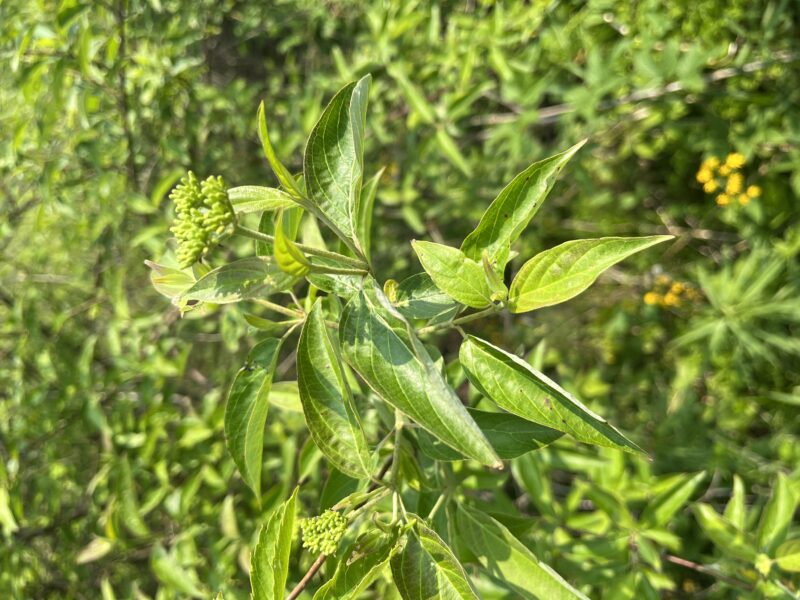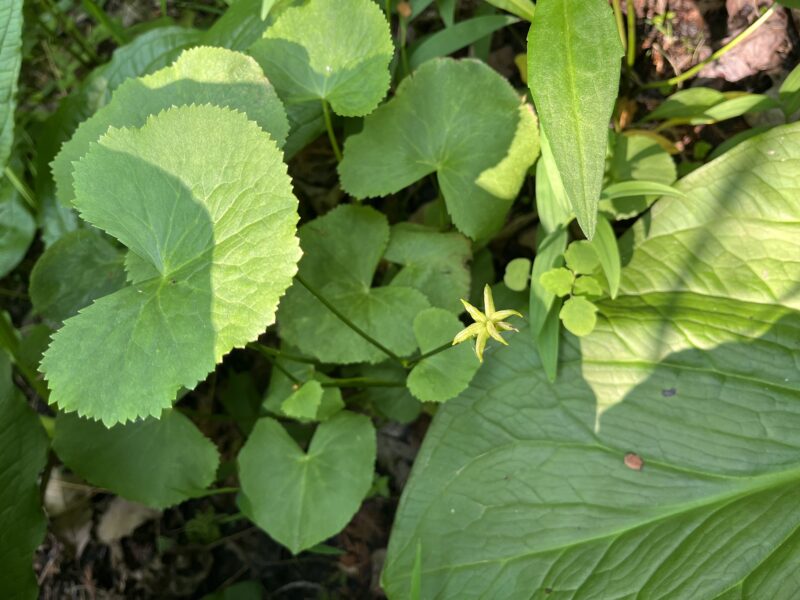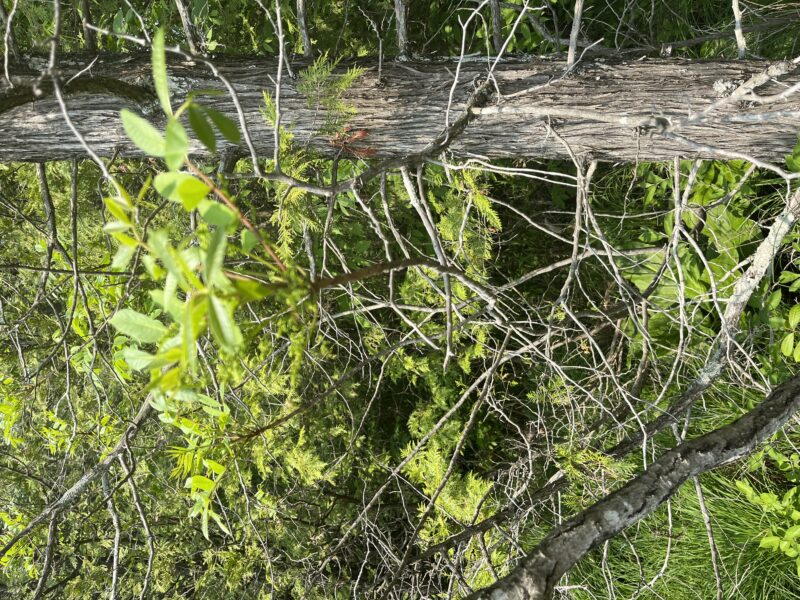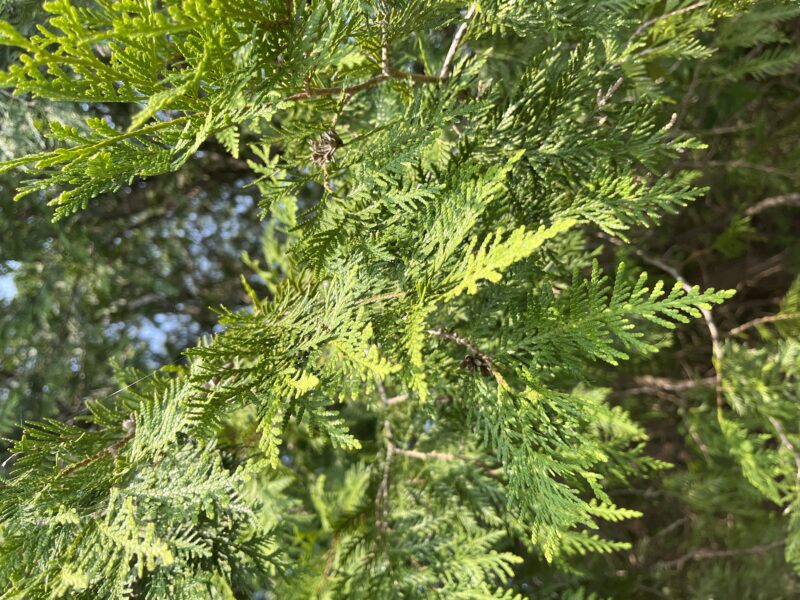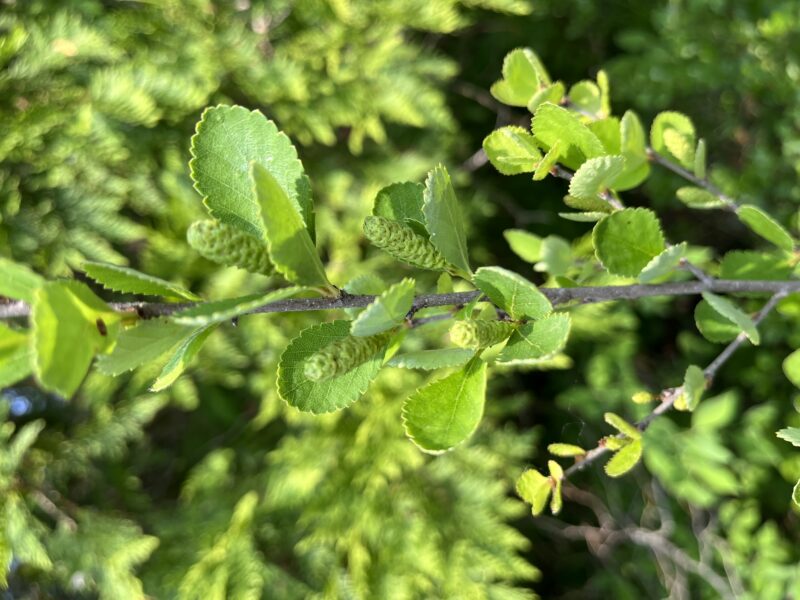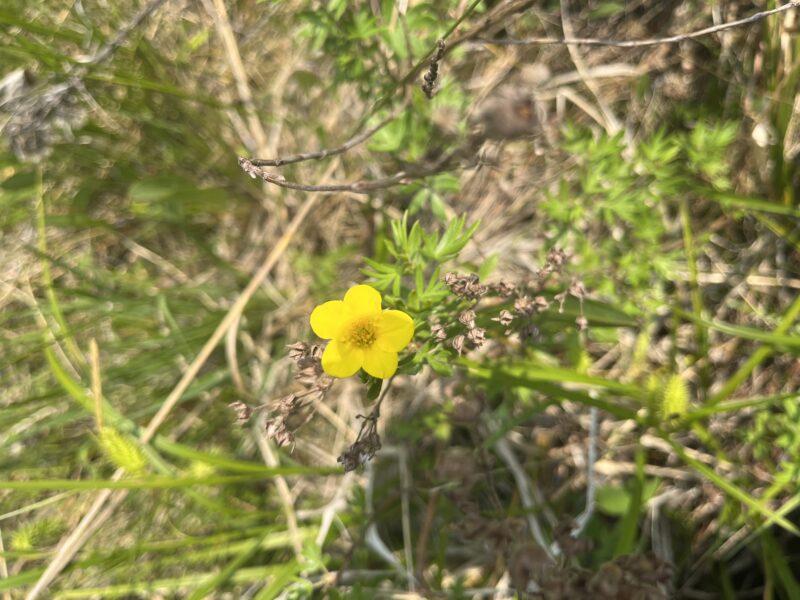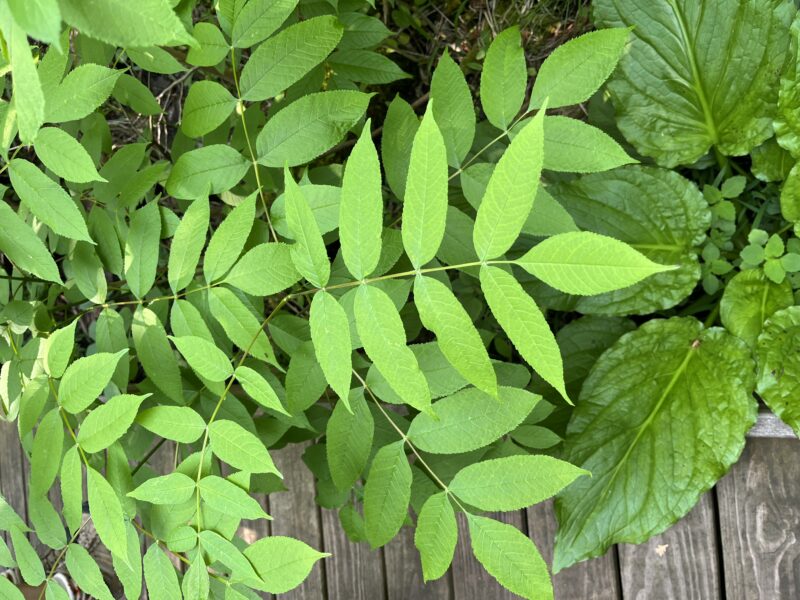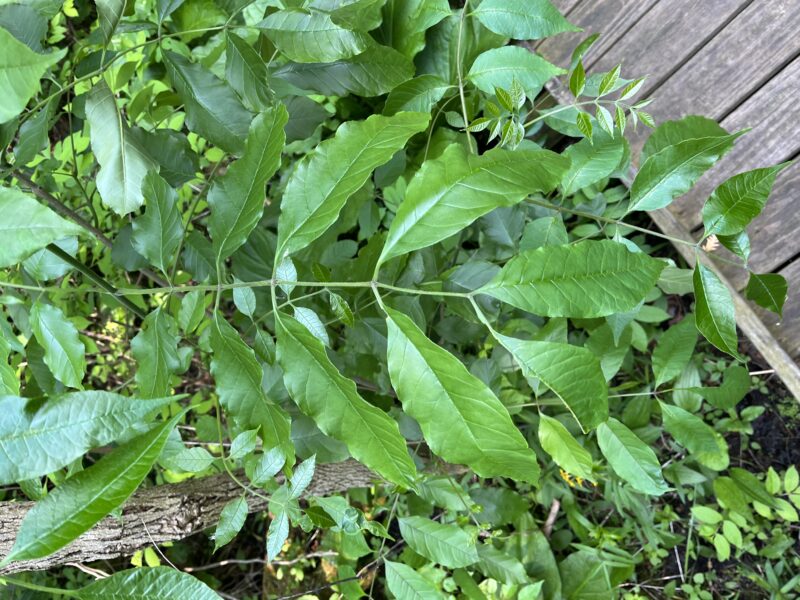I’m a little bogged down by the name Bog…
Cedar Bog is an extremely unique location in Ohio and some would say even the whole country because of both its geology and biodiversity. However, Cedar Bog is anything but a bog! A bog is defined as a freshwater wet land but importantly the water is still and not from the ground. Cedar Bog gets its water content from the flowing water below ground, the water from the ground originates from the valley that was left by the Teays River that used to flow directly on top of the area. The movement in the water constitutes it as a fen and NOT a bog. What the “bog” lacks in honesty, it makes up for in biodiversity. Fens allow for a lot of niche species to thrive in their environments. Many plants with very high coefficients of conservatism can be found at Cedar Bog. It is like the rainforest of Ohio for biodiversity!
My Assignment: 2 fruit types!
Elderberry Shrub (Multiple of drupes)
The Elderberry Shrub
The way to identify the Elderberry shrub is to look at both the leave specifications and the fruiting type. Elderberry shrubs produce multiples of drupes because the flowers grow in clusters known as inflorescence. The fruits are classified as drupes because on the inside of the fleshy exterior is a hard bony-like seed. The leaves of Elderberry shrubs are arranged opposite and have pinnate complexity. The leaves have a slight serration and curve upwards at the sides.
An interesting fact about Elderberries is that historically it has been used to heal many ailments. It has many health benefits and thus has been used in the production of many cough syrups and pain medications.
Yellow Marsh Marigold (Aggregate of follicles)
The Yellow Marsh Marigold (Caltha palustris) is an interesting case when it comes to its fruiting type because it has a less common type, follicles. The arrangement due to the multiple pistils on one flower resulting in multiple fruits per flower makes the fruiting type an aggregate. But the single split on each fruit which releases multiple seeds means that this aggregate is specifically an aggregate of follicles. Upon fruiting the fruits appear green but fade to a beige/brown before splitting open.
The way to identify the March Marigold is to look at the flower and the basal leaves. Marsh Marigolds belong to the Buttercup family, Ranunculaceae. They have apocarpous hypogynous gymnasiums with no hypanthium and appear yellow. The leaves are almost exclusively basal with pretty broad leaf spans and generally 2 per stem.
An interesting fact about Marsh marigolds is that even though many plants that have been discussed before have been used in foods and for medicinal purposes throughout history, Marsh Marigolds are excluded from this category because they have been found to be very bitter and in large quantities can be poisonous to livestock!
Conservative Fen Plants and 2 Ash Varieties
Poison Sumac
Poison Sumac (Toxicodendron vernix) is identifiable from its pinnate leaf complexity and its alternate arrangement. The leaves tend to be centralized around the top of the plant, with few leaves in comparison to other trees and shrubs. The stems are slightly red in color and have slightly red-tinted veins on the leaves as well.
Coefficient of conservatisim: 7
Northern White Cedar
The Northern White Cedar (Thuja occidentalis) is quite rare but can be found natively in Ohio. The leaves are scale-like, indicative of a conifer, and occur in bunches that appear as flattened sprays.
Coefficient of conservatisim: 9
Swamp Birch
The Swamp Birch (Betula alleghaniensis) is a pretty rare find. The leaves of this birch are particularly unique because of their small size in comparison to the fruits. This Swamp Birch in particular was the size of a shrub, the margins were serrate and the leaves appeared entire and somewhat alternate.
Coefficient of conservatism: 7
Shrubby Cinquefoil
The Shrubby Cinquefoil (Dasiphora fruticosa) had the highest recorded coefficient of conservatism of 10. Making it an extremely cool find so close to the boardwalk. It is the type of plant that could be mistaken for a common yellow buttercup or rose when in actuality it is quite rare and especially useful for enriching the soil by preventing erosion. Which is an important quality for a fen containing flowing water.
Coefficient of conservatism: 10
Black Ash
The Black Ash (Fraxinus nigra) is distinct from other ashes because its leaves are NOT stalked. Leaflets are in bunches of approximately 9 and are serrated. The twigs are rather smooth and dull in comparison to other species of the Fraxinus genus. The leaves like other ash trees are pinnately compound in opposite arrangement. Many Black Ashes that were seen at Cedar Bog were much taller than the Green Ashes present.
Green Ash
The Green Ash (Fraxinus pennsylvanica) in comparison to Black Ash is still pinnately compound in the opposite arrangement with around 11 leaflets per stalk. Differing from Black Ash, Green Ash has shiny leaves that are wavey and have smooth margins. The leaflets on Green Ash importantly are stalked! In comparison to the Black Ash, the Green Ash was shrubby in size.
Floristic Quality Calculations
SWAMP FOREST
- Caltha palustris
- Common Name: Yellow Marsh Marigold
- Wetland Status: OBL
- CC: 6
- FQAI: 2.45
- Iris viginica
- Common Name: Southern Blue Flag
- Wetland Status: OBL
- CC: 6
- FQAI: 2.45
- Lindera benzoin
- Common Name: Spicebush
- Wetland Status: FACW-
- CC: 5
- FQAI: 2.04
- Senecio aureus
- Common Name: Golden ragwort
- Wetland Status: FACW
- CC: 4
- FQAI: 1.63
- Symplocarpus foetidus
- Common Name: Skunk Cabbage
- Wetland Status: OBL
- CC: 6
- FQAI: 2.45
- Ranunculus septentrionalis
- Common Name: Swamp Buttercup
- Wetland Status: FAC
- CC: 4
- FQAI: 1.63
SEDGE MEADOW
- Dasyphora fruticosa
- Common Name: Shubby Chinquefoil
- Wetland Status: FACW
- CC: 10
- FQAI: 4.08
- Drosera rotundifolia
- Common Name: Round-leaved Sundew
- Wetland Status: OBL
- CC: 7
- FQAI: 2.86
- Betula pumila
- Common Name: Bog Birch
- Wetland Status: OBL
- CC: 10
- FQAI: 4.08
- Valeriana uliginosa
- Common Name: Marsh Valerian
- Wetland Status: FACW+
- CC: 10
- FQAI: 4.08
- Toxicodendron vernix
- Common Name: Poison Sumac
- Wetland Status: OBL
- CC: 7
- FQAI: 2.86
- Utricularia minor
- Common Name: Lesser Bladderwort
- Wetland Status: OBL
- CC: 8
- FQAI: 3.27

